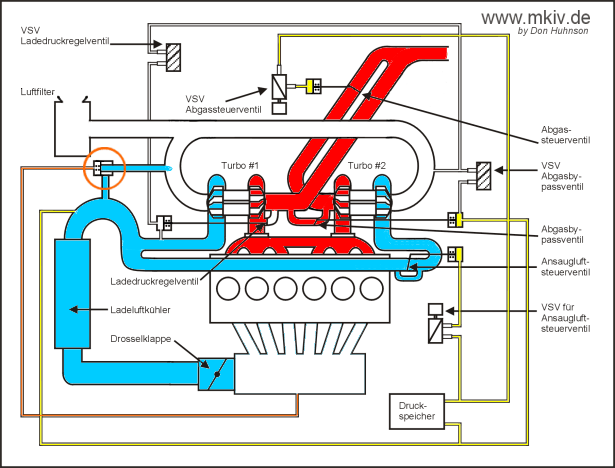The Supra engine is charged via two CT12 turbochargers. The charging takes place sequentially. At low speed, only one loader works. If the speed increases, the second one starts up. The two turbos only run in parallel when they have built up the same boost pressure.
The sequential charging is controlled via control boxes and solenoid valves:
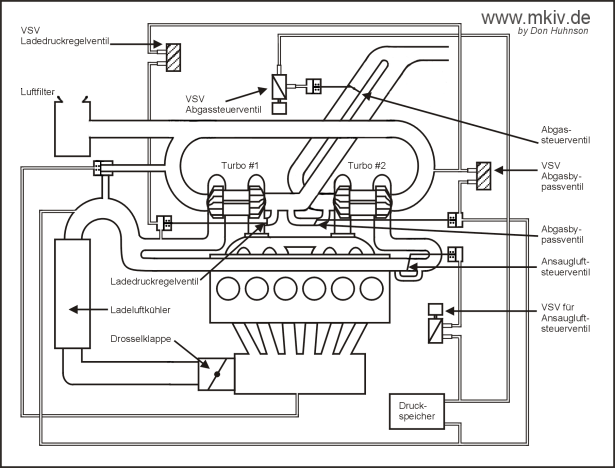
Start Turbo # 1:
At low speed, the exhaust control valve and intake air control valve are closed, driving only Turbo # 1:
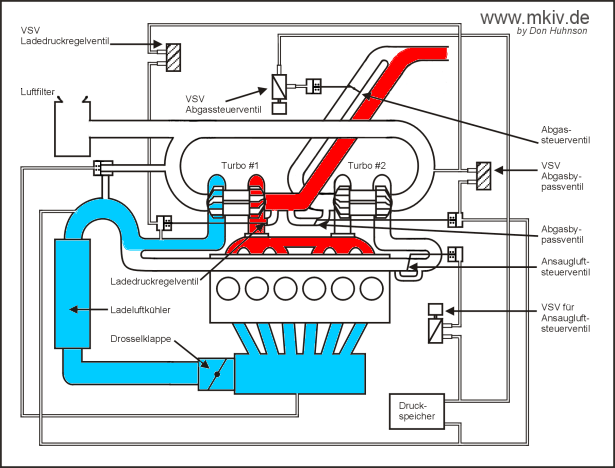
Prespooling Turbo # 2:
Prespooling refers to the "running ahead" of the 2nd turbos. This is to prevent the turbo being brought "cold" to full power against the system pressure, which is detrimental to the bearings. Prespooling is initiated by opening the exhaust bypass valve. This starts the second turbo to turn.
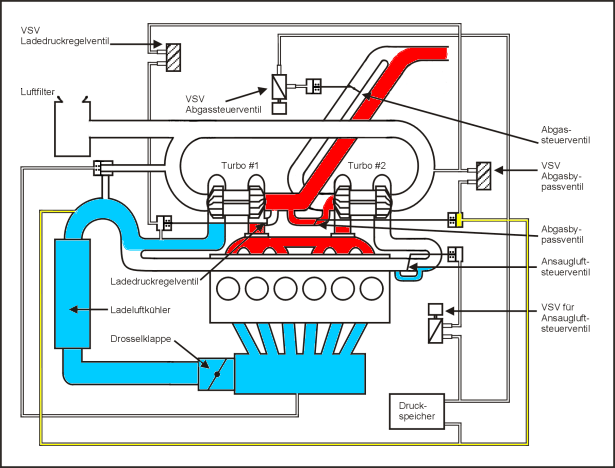
Start Turbo # 2:
During the start-up phase of Turbo # 2, the built-up pressure is first fed via a reed valve to the intake system (blue below the intake air control valve).
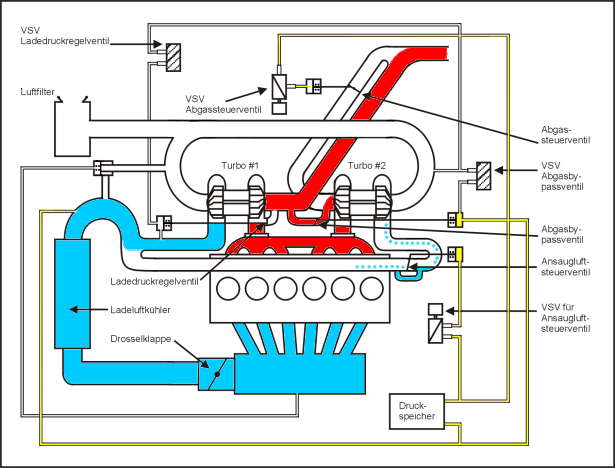
Twin turbo mode:
At higher speed, the exhaust control valve and intake air control valve are both open, whereby turbo no. 1 and 2 compress the intake air together. The turbos are now running in parallel.
System view at full throttle:
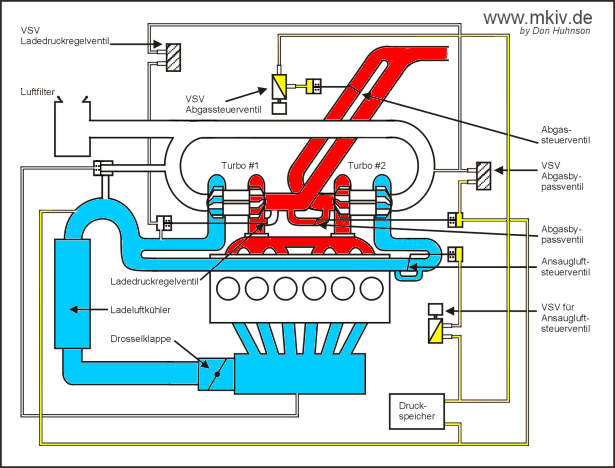
Extended information on the above picture:
The function of the valves (exhaust gas control and intake air control valve) is controlled by the associated solenoid valves. The system pressure is first directed through pressure lines to the electric solenoid valves (VSV = Vacuum Switching Valve). If the solenoid valves are deactivated, the air pressure is vented to the outside via a filter on the valve. If the solenoid valve closes, the boost pressure is directed to the associated setting box, which opens the actual valve via a push rod. The diagram above shows the involved valves and pressure lines (yellow) at full load.
Charge pressure control:
In the high speed range, the boost pressure of the entire system is regulated by the wastegate. The valve is moved through the turbo socket # 1 and opens at a certain pressure a wastegate, which bypasses the exhaust gases on the 1st loader. As a result, a charge pressure limitation takes place. The function of the control box is influenced by the downstream VSV (yellow). As standard, the VSV ensures that the total boost pressure can not rise above 0.7 - 0.8 bar.
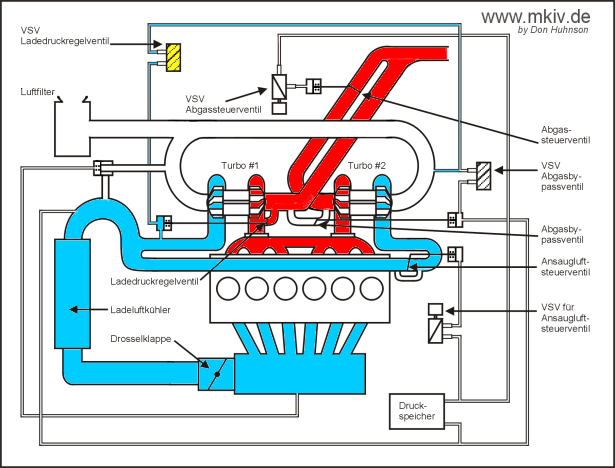
Blow-off function:
When the throttle is removed, the throttle closes. This creates a negative pressure in the suction chamber, which opens the bypass valve (blow-off valve) via a vacuum line (orange). The compressed air is directed back to the intake section in front of the turbos (blue).
